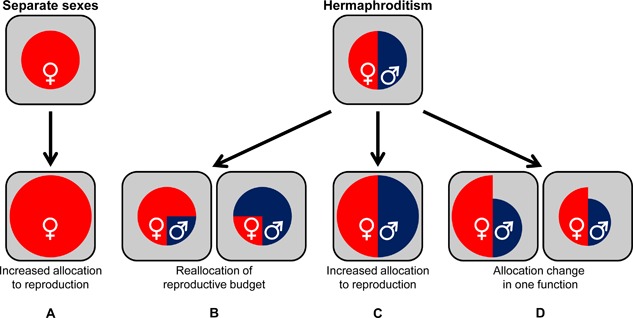Figure 2.

Changes in reproductive allocation due to accessory gland proteins. A: In species with separate sexes, overall investment in reproduction can be increased at the expense of the non‐reproductive energy budget (indicated by the grey area). B: In simultaneous hermaphrodites, in line with the general assumption of sex allocation theory, allocation can be shifted in either direction without affecting the non‐reproductive budget. In this case, female investment is most likely to increase (left option). C: As is separate‐sexed species, the overall reproductive investment can be increased. D: Alternatively, the investment in one specific sexual function can be changed without sacrificing investment in the other sexual function but rather investment in the nonreproductive budget; an increase most likely occurs in the female function (left option), a decrease is more likely for the male function (right option).
